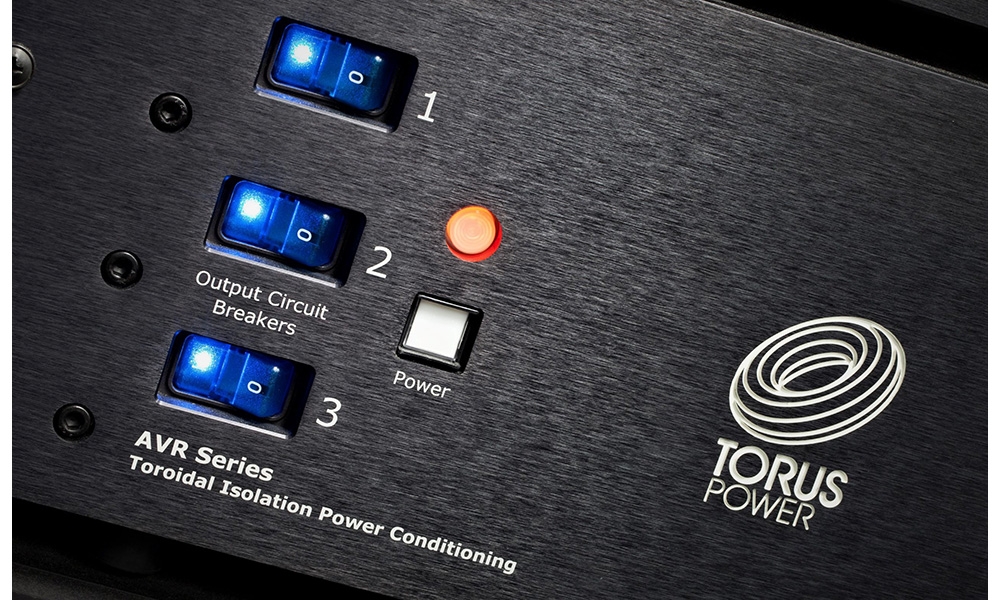Torus Power recommends that dealers present power isolation and protection products as part of their initial bids, along with other standard system components.
Noise and harmonics on a home’s electrical lines are pervasive and can be detrimental to the lifespan and performance of sensitive electronic equipment. Often you can’t see or hear these electrical disturbances, but there’s one area of the home where noise and harmonics make their presence known—the electronic components powering a media center control center, elaborate HDMI system, or audio-video experience, whether it’s a few speakers in a single room or setup as a whole-house system.
Modern electronic equipment depends on a low distortion voltage supply to operate to spec, and there is high sensitivity to harmonics, noise, fluctuations and transients. These problems can wreak havoc on microprocessors and other sensitive components, so how do we minimize noise and harmonics to achieve that optimal sound quality?
Where do Electrical Noise and Harmonics Come From?
According to the power protection and conditioning equipment manufacturer Torus Power, most harmonics originate from the generation of harmonic currents caused by nonlinear loads. Unlike linear loads that draw current continuously like an incandescent light bulb, non-linear loads consume power in an irregular manner, causing the current to dip and swell uncontrollably as the devices operate. Common nonlinear equipment includes computers, printers, ceiling fans, LED lights, washing machines, clothes dryers, and countless other household devices. These devices draw power unevenly and the result is distorted current wave shapes that contaminate other parts of the power supply.A quick tally of nonlinear devices in a customer’s home can give you a good idea of the extent of the problem and the importance of proper power management to isolate the AV electrical system.The problem with modern electronics Torus Power explains is audio-visual and control systems are extremely susceptible to deviations in the electrical current waveform known as harmonics. Electronic equipment is sensitive to noise and harmonics entering through the power line. This unwanted noise may affect the system in many ways including reduced performance and malfunctions.Most audio-video and control installations can manage up to about 5-8% total harmonic distortion (THD) on the voltage line, but when levels rise above this range harmonic induced problems can result in overheated power supplies, unresponsive commands, and minute levels of deterioration that can be a hidden catalyst resulting in operational issues, equipment failure, and expensive downtime.
Solving Dirty Power Issues by Addressing the Source
Torus Power suggests the best way to deal with noise and harmonics is to use products and techniques that are specially designed to isolate audio-visual and control systems from noise and harmonics and supply the sensitive electronic components with clean, isolated power.
The Canadian power equipment manufacturer asserts that If professional integrators take the right layered approach to power at the onset by making power isolation the foundation of their installations, distorted and dirty power has no chance of compromising the performance or reliability of their system installs.
When specifying a clean power foundation that minimizes problematic noise and harmonics Torus Power says it is important to understand some key parameters such as the source of electricity, the supply voltage at the installation site, and the total amperage load of the entire home entertainment and control system. Does the AV system utilize standard 240 volts or three-phase, 208-volt power? What are the designs of the various power supplies in the equipment and what is the intended use of that equipment?
After these parameters have been identified and a proper isolation transformer is selected, the unit can be installed within the equipment rack or in a separate area like an equipment room to supply clean power to the AV processors, amplifiers, video components, and source equipment.
Drawing a comparison, Torus Power points out that today integrators wouldn’t dream of installing a high-performance AV or control system without a robust network. These considerations the company stresses should also be applied to power isolation and system protection. Good quality power free from noise and harmonics Torus underscores is vital to the performance of the essential system components—not to mention the satisfaction of customers that expect performance and reliability.
Dealers that deal with harmful power issues up front will experience a much higher success rate and client acceptance by specifying power solutions along with other essential components at the start of a proposal where they belong.
To learn more about power isolation and protection products, email sales@toruspower.com.
